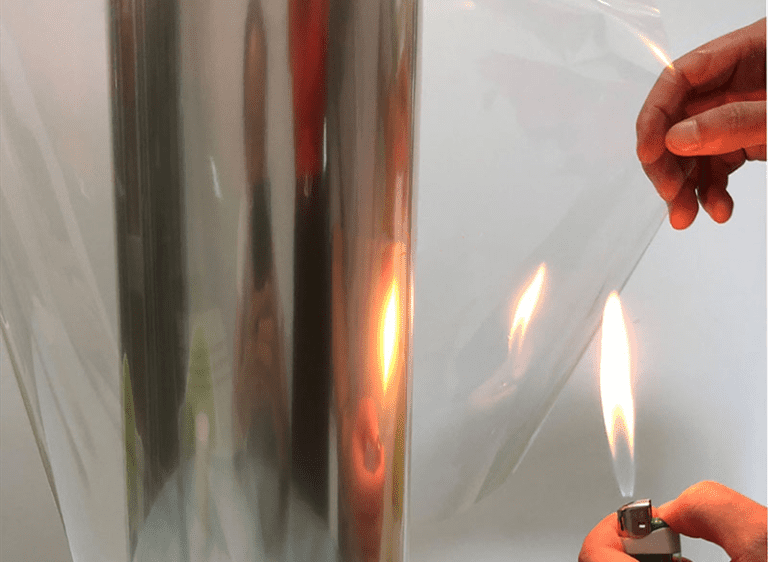Polyethylene terephthalate (PET) is one of the most important thermoplastic polyesters. Pet can maintain excellent physical and mechanical properties in a wide temperature range. It has excellent fatigue resistance, friction resistance and aging resistance, outstanding electrical insulation, stable to most organic solvents and inorganic acids, low production energy consumption and good processability. Therefore, pet has been widely used in plastic packaging bottles, films and synthetic fibers. As an engineering plastic, pet can be used in the following fields: electronic appliances, automobiles, machinery, appliances and consumer goods. As pet is widely used in automotive, electrical and other industries, which have strict requirements on material combustion and safety performance, improving flame retardant performance is one of the most basic requirements of pet plastics. Whether as a plastic or a fiber, this material has high requirements for flame retardant properties. Therefore, the development of flame retardant PET is increasingly becoming an important research field of PET materials. There are three main methods for flame retardant PET materials: flame retardant added to pet, flame retardant copolymerization of pet and intelligent flame retardant of pet.
At present, the industrial preparation of pet flame retardant materials is still based on the method of adding flame retardant, mainly because the flame retardant modified PET materials do not change the polymerization process of pet, and the method is flexible and easy to adjust. Pet flame retardant materials prepared by adding flame retardants have many advantages. The flame retardancy of the composites can be effectively improved through the synergistic effect of a variety of flame retardants.
The method of adding flame retardants is to add appropriate kinds and amounts of small molecular compound flame retardants to the pet matrix, and improve the flame retardancy of pet by using the flame retardants and the gas phase or (and) condensed phase flame retardancy of the matrix materials during combustion. The method has the advantages of simple method, low cost, convenient and flexible adjustment of the flame retardant performance and flame retardant level of the obtained pet to meet the needs of various practical applications, so it is a widely used method at present. The main problem is that most of these small molecule flame retardants have low flame retardant efficiency and large amount of additives, which often have a negative impact on the processability and mechanical properties of pet while giving flame retardant properties. In addition, the chemical composition of these flame retardants is quite different from that of pet, so their compatibility is poor. During processing and use, flame retardants may migrate and precipitate from pet, affecting the appearance quality of products and the durability of flame retardant effect.
There are many compounds that can be added to pet as flame retardant. For example, decabromodiphenyl ether (DBDPO) can play a good flame retardant effect in pet. This is because the flame retardant has high bromine content and decomposition temperature greater than 350 ℃. It is a brominated aromatic flame retardant with high purity and excellent thermal stability. Adding triphenyl phosphate, trimethylbenzene phosphate, triethyl phosphate and brominated triphosphate (tdbppe) into pet to make flame retardant PET is also the method of adding flame retardant.
Inorganic phosphorus flame retardants can also be used for flame retardant of PET materials, mainly including red phosphorus, phosphate and ammonium polyphosphate, which are non halogen flame retardants. Among them, red phosphorus is a better pet flame retardant with the advantages of less addition and wide application. Because red phosphorus only contains flame retardant elements, it is more efficient than other phosphorus flame retardants, especially for pet oxygen-containing polymer materials.
Nitrogen based flame retardants can also be used for flame retardant of pet. At present, nitrogen-based flame retardants mainly include three categories: melamine, dicyandiamide, guanidine salt and its derivatives. Melamine, melamine cyanuric acid and melamine phosphate are the most potential varieties in the flame retardant market. As for the flame retardant mechanism of nitrogen series flame retardants, it is generally believed that nitrogen series flame retardants are easy to release non combustible gases such as ammonia, nitrogen, deep nitrogen oxides and water vapor after thermal decomposition. The generation of non combustible gases and the decomposition heat absorption of flame retardants (including the sublimation heat absorption of some flame retardants) take away most of the heat, greatly reducing the surface temperature of polymers. The non combustible gas acts as the oxygen in the dilution air and the combustible gas generated by the thermal decomposition of pet. At the same time, due to the existence of nitrogen-containing flame retardant, pet can react with oxygen in the air to generate carbon dioxide, water and nitrogen-containing oxides during combustion. It can achieve good flame retardant effect while consuming the oxygen on the surface of materials. The main advantages of nitrogen based flame retardants are high flame retardancy, halogen-free and corrosion-free.


